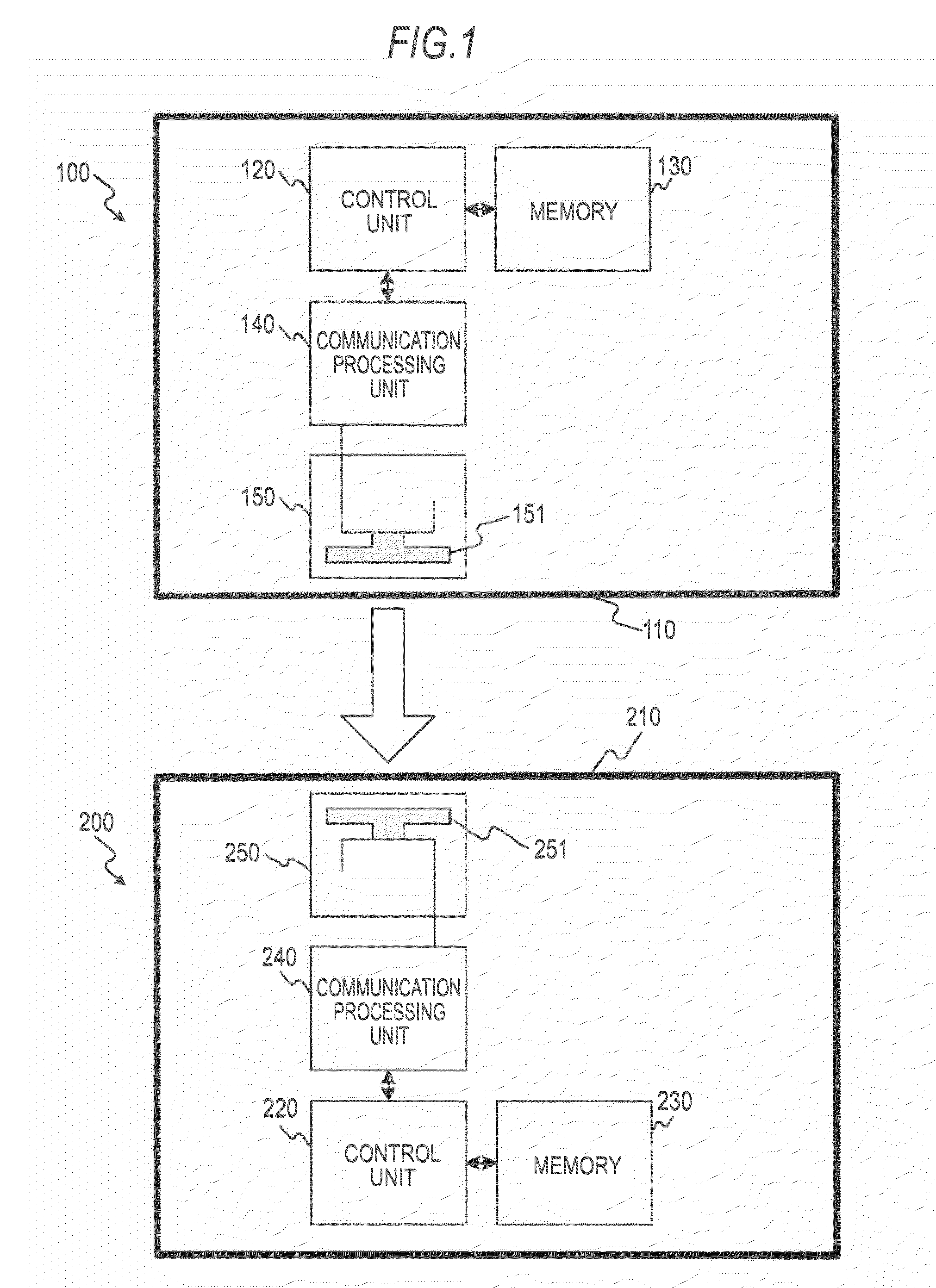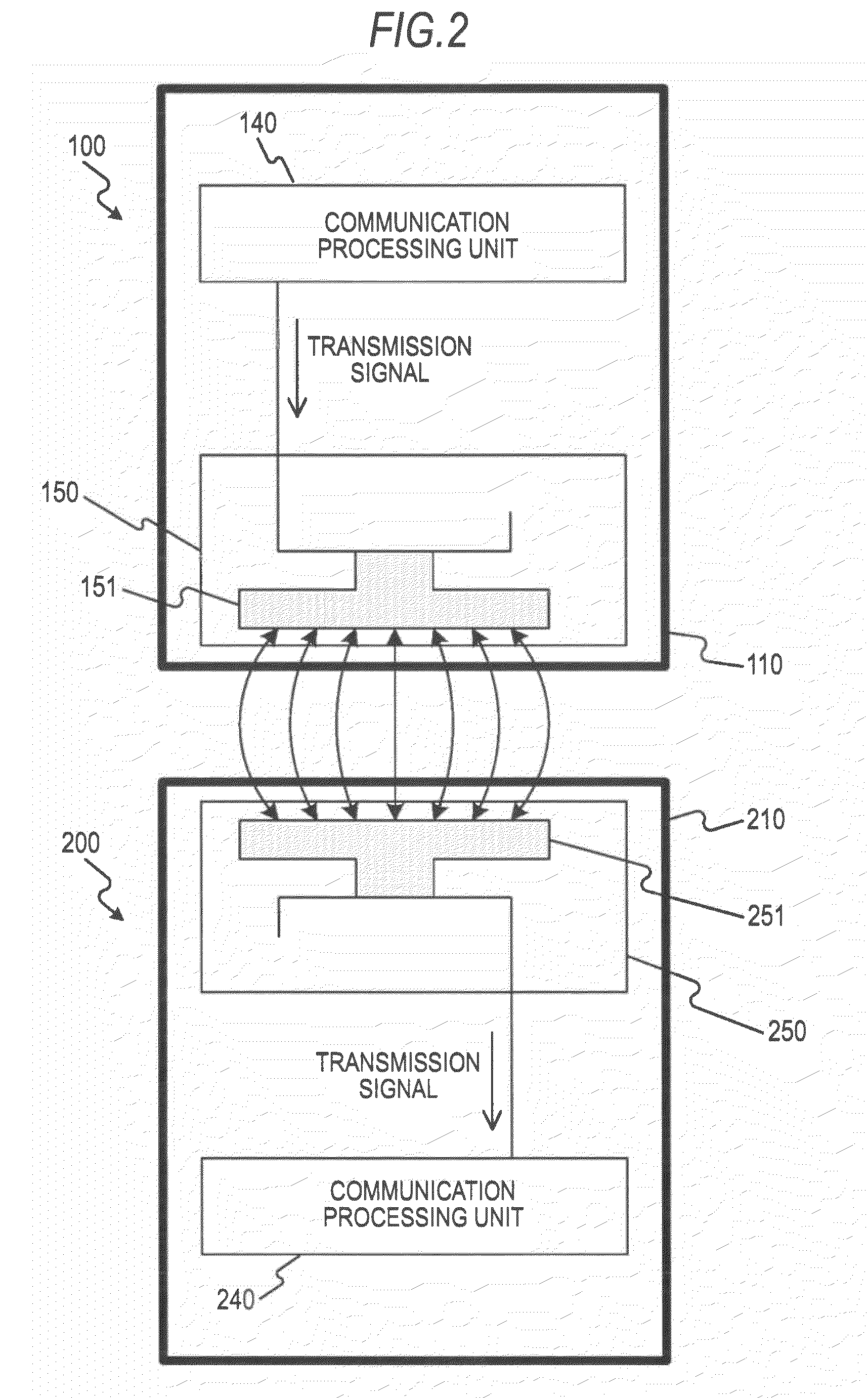Electronic apparatus and communication device
- Summary
- Abstract
- Description
- Claims
- Application Information
AI Technical Summary
Benefits of technology
Problems solved by technology
Method used
Image
Examples
first embodiment
1. First Embodiment
Outline of Near-Field Wireless Communications System
[0039]First, an outline of near-field wireless communications standards with which the embodiments of the invention are compliant will be explained. The near-field wireless communications standards with which the embodiments of the invention are compliant are so-called TransferJet (registered trademark). As its communicable distance, a very short distance of about 3 cm to 5 cm is set, and it is assumed that a considerably high data transfer speed of 560 Mbps at the maximum (effective speed: 375 Mbps) may be obtained within the range of the communicable distance. Further, its network topology (communication mode) is constantly one to one (Point-to-Point).
[0040]In the TransferJet standards, Point-to-Point communications at a communication distance limited to several centimeters is employed as described above, and, for example, the security level comparable to that of wired connection may be obtained without encrypt...
first modified example
[0088]FIGS. 11A and 11B show a configuration example of the electric field reinforcing member 160 as a first modified example in the embodiment of the invention. In the drawings, the same signs are assigned to the same parts as those in FIGS. 4A and 4B and their explanation will be omitted. In an electric field reinforcing member 160A in this case, the slit 165 formed in the electric field reinforcing member 160 as shown in FIGS. 4A and 4B, for example is omitted and the member is formed as a C-shaped flat plate as known from the front view of FIG. 11A. That is, the electric field reinforcing member 160A in this case is formed not in the looped shape but as a flat plate having a C-shaped outer shape.
[0089]Note that, the size of the electric field reinforcing member 160A may be specified in the same manner as that of the electric field reinforcing member 160 of the first embodiment of the invention. That is, as shown in FIG. 12, the size should be set so that the above described equa...
second modified example
[0093]FIGS. 14A to 14C show a configuration example of an electric field reinforcing member 160B as a second modified example in the embodiment of the invention. In the electric field reinforcing members 160 and 160A that have been shown in FIGS. 4A and 4B and 11A and 11B, the C-shapes are formed as the flat surface shapes of the plates. On the other hand, in the electric field reinforcing member 160B of the second modified example, a C-shape is formed by bending a rectangular plate as known from the perspective view of FIG. 14A. That is, the entire shape formed by its thickness part is C-shaped.
[0094]Also, in this case, setting the size so that the lengths L1, L2, L3 of the inner three sides forming the C-shape may satisfy the equation (1) is the same as in the cases of the first embodiment and the first modified example of the invention. Further, setting the lengths L1, L2, L3 in response to the wavelength shortened according to the shortening rate in the case where the electric f...
PUM
 Login to View More
Login to View More Abstract
Description
Claims
Application Information
 Login to View More
Login to View More - R&D
- Intellectual Property
- Life Sciences
- Materials
- Tech Scout
- Unparalleled Data Quality
- Higher Quality Content
- 60% Fewer Hallucinations
Browse by: Latest US Patents, China's latest patents, Technical Efficacy Thesaurus, Application Domain, Technology Topic, Popular Technical Reports.
© 2025 PatSnap. All rights reserved.Legal|Privacy policy|Modern Slavery Act Transparency Statement|Sitemap|About US| Contact US: help@patsnap.com



